Santa Maria Novella
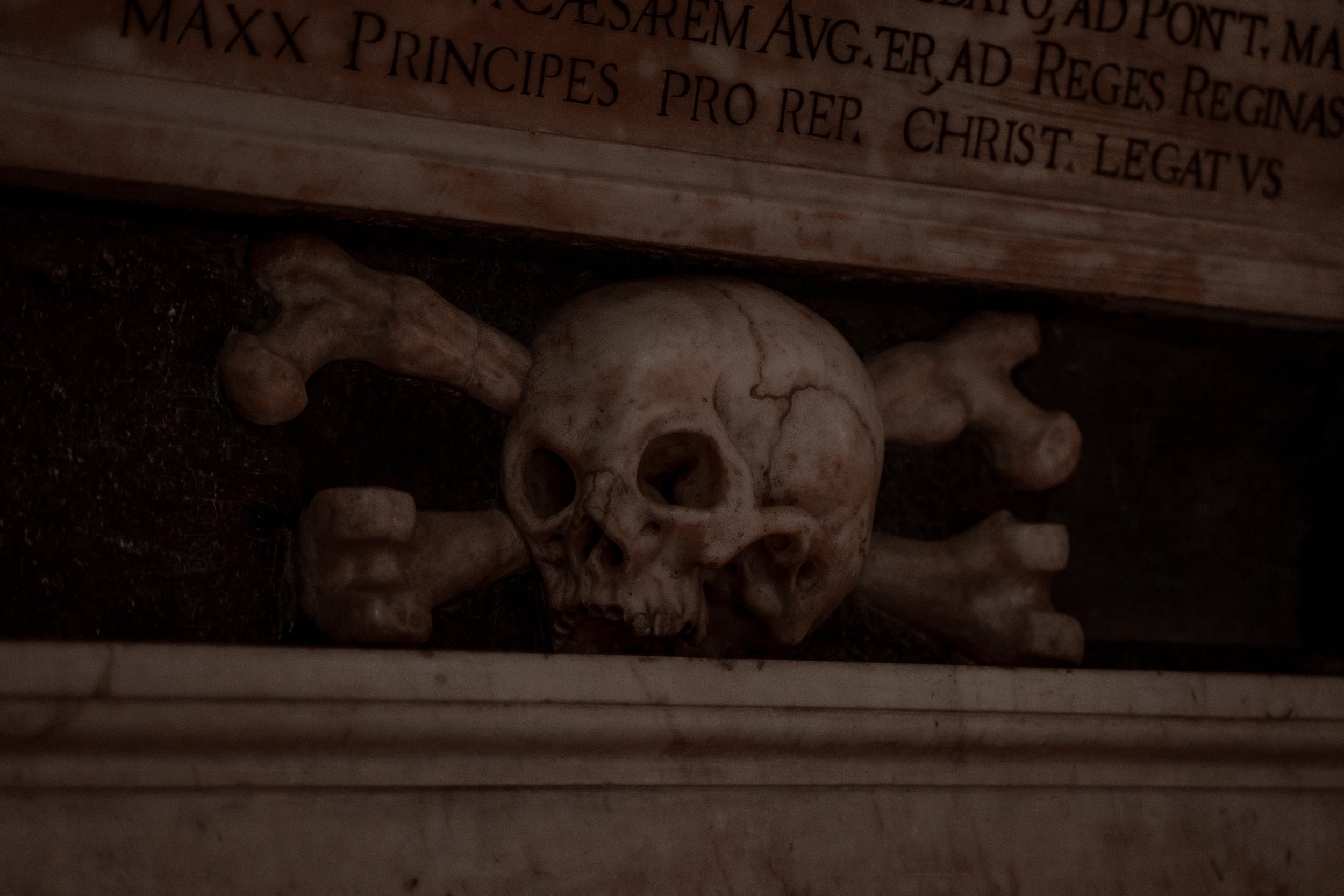
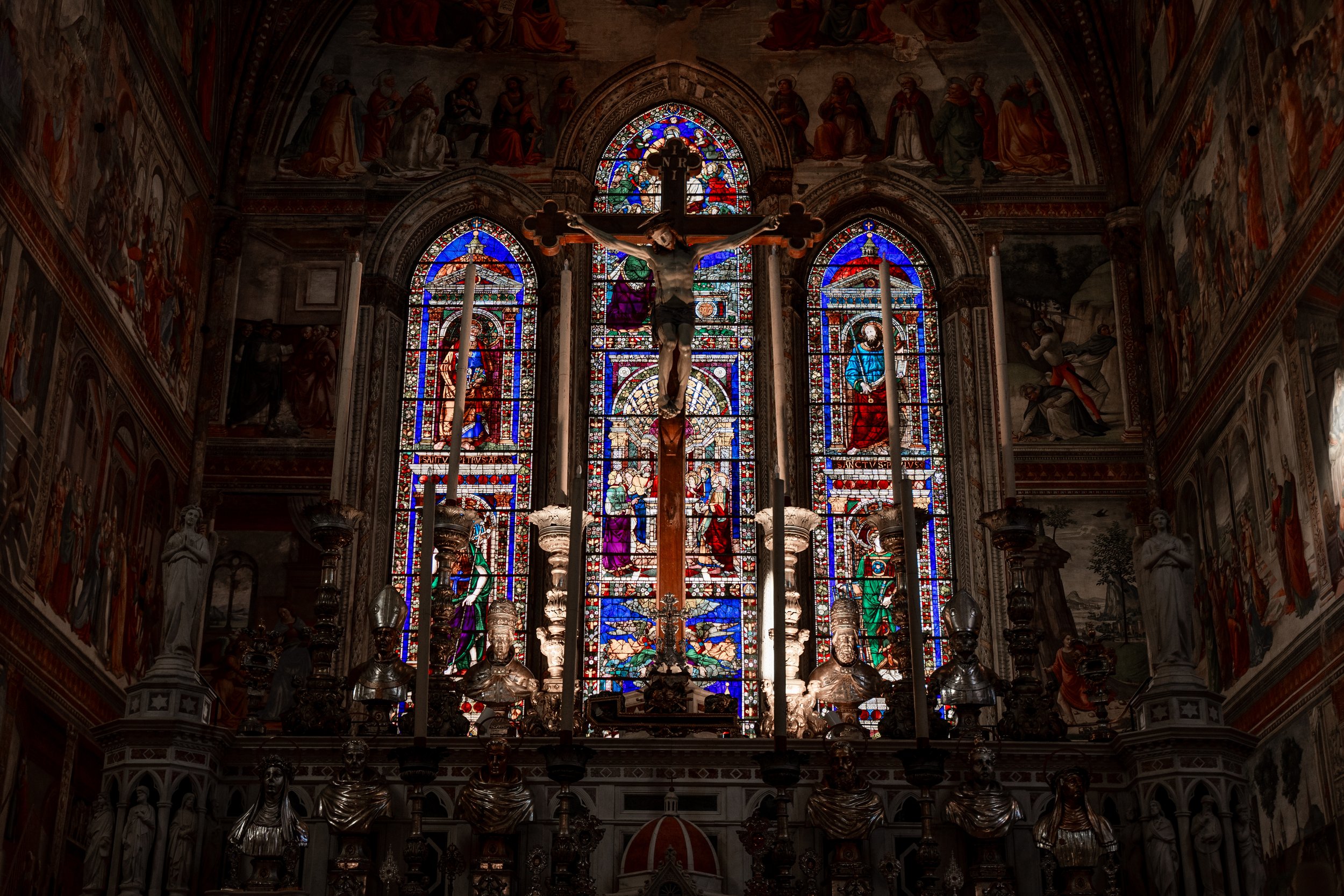
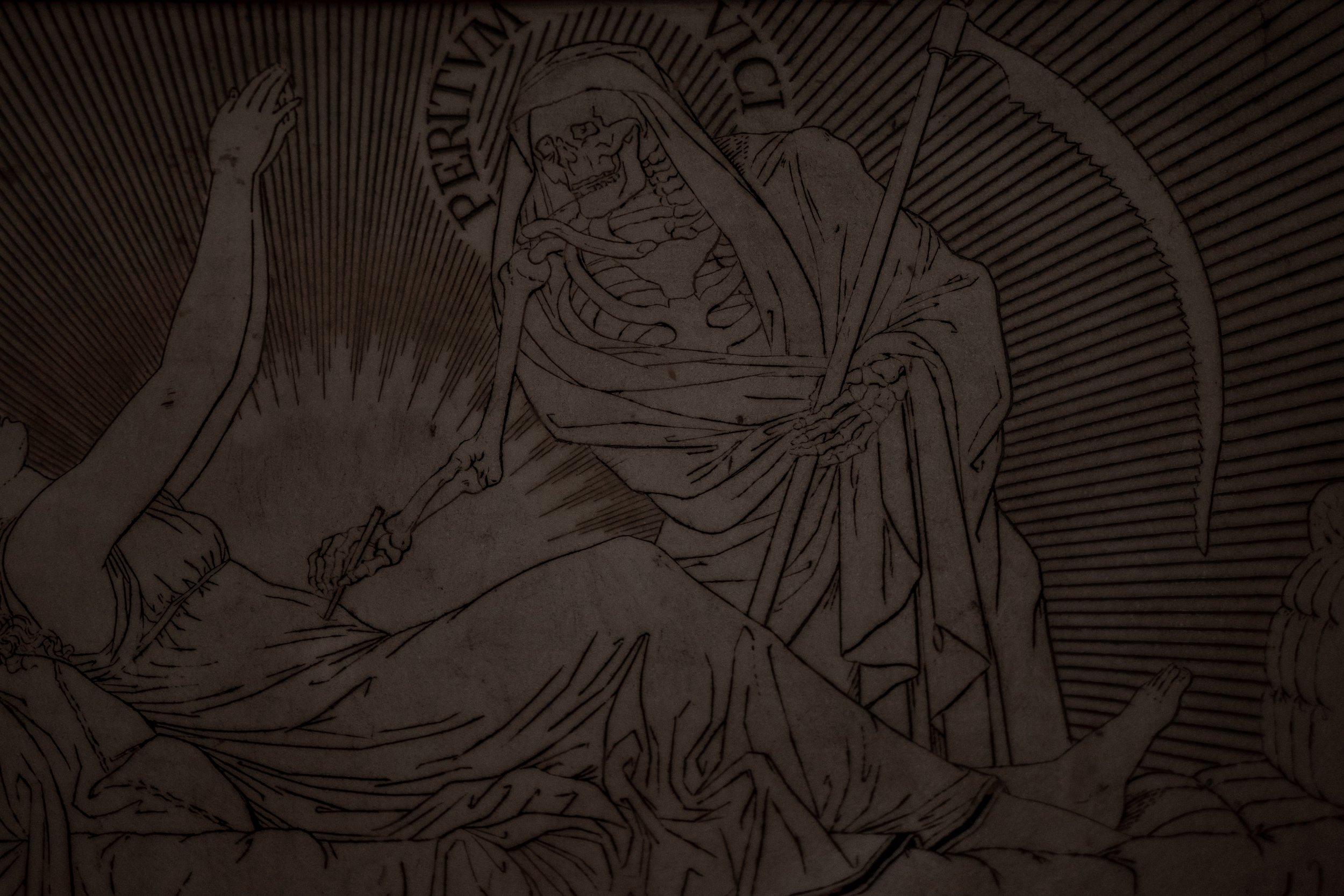
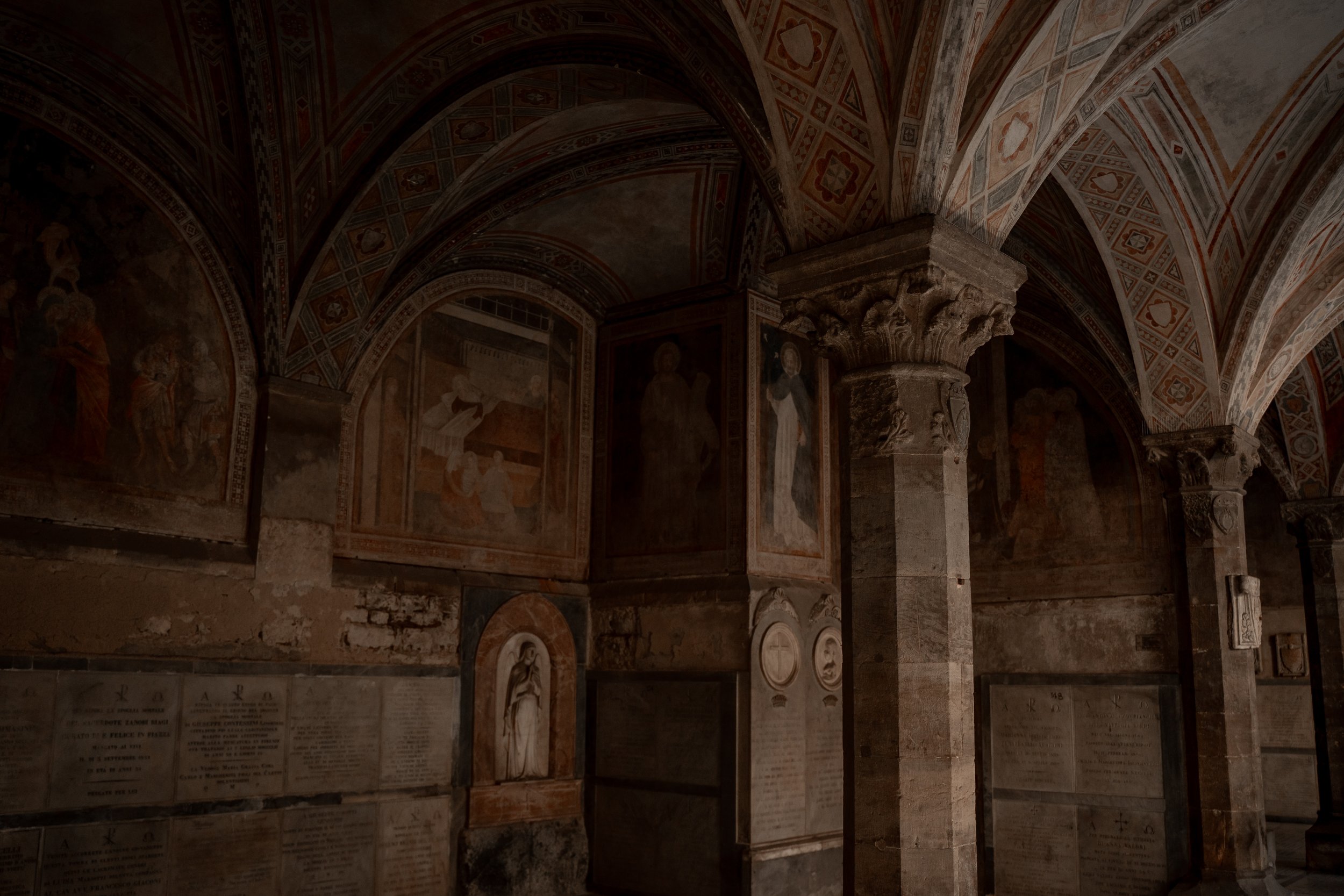
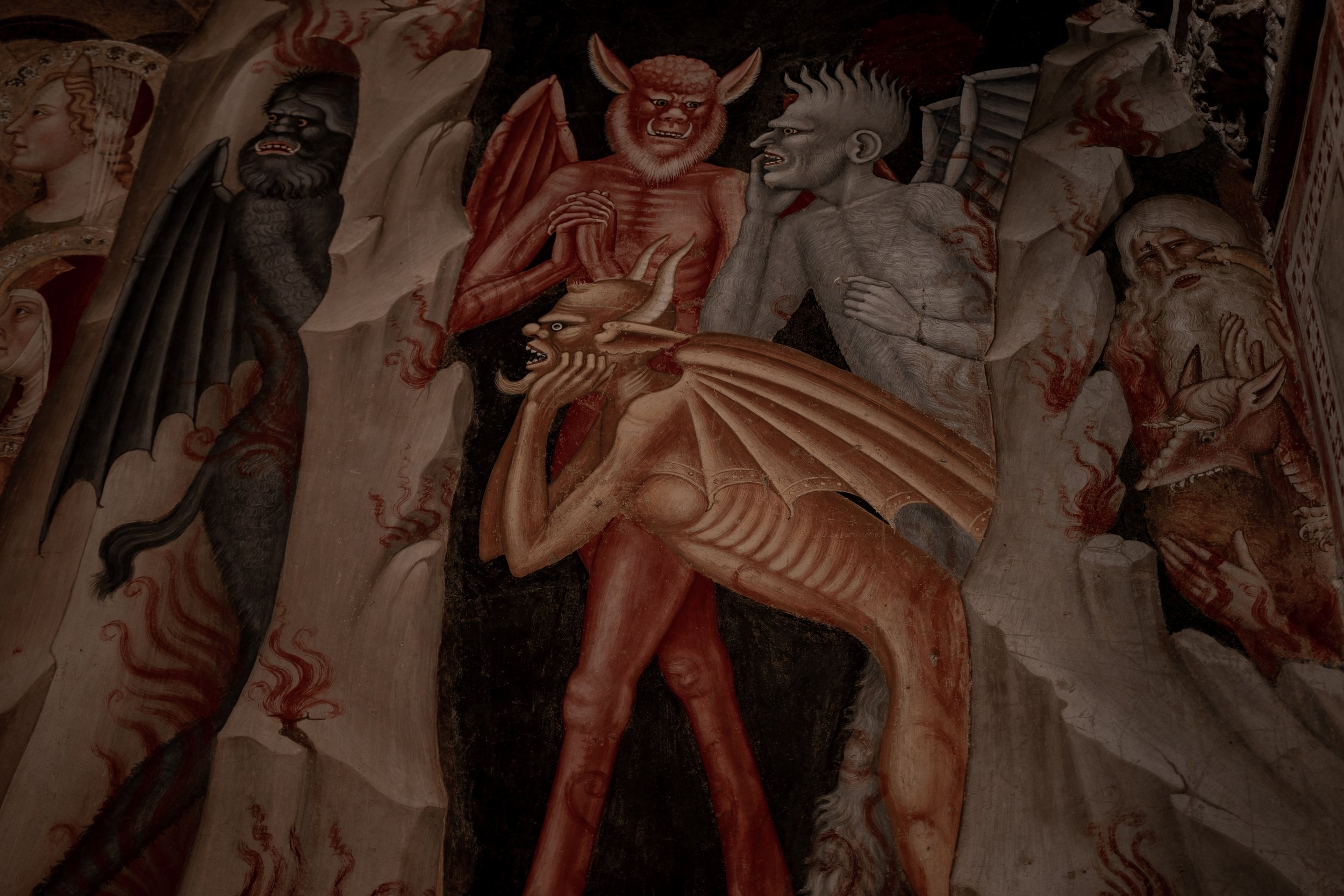
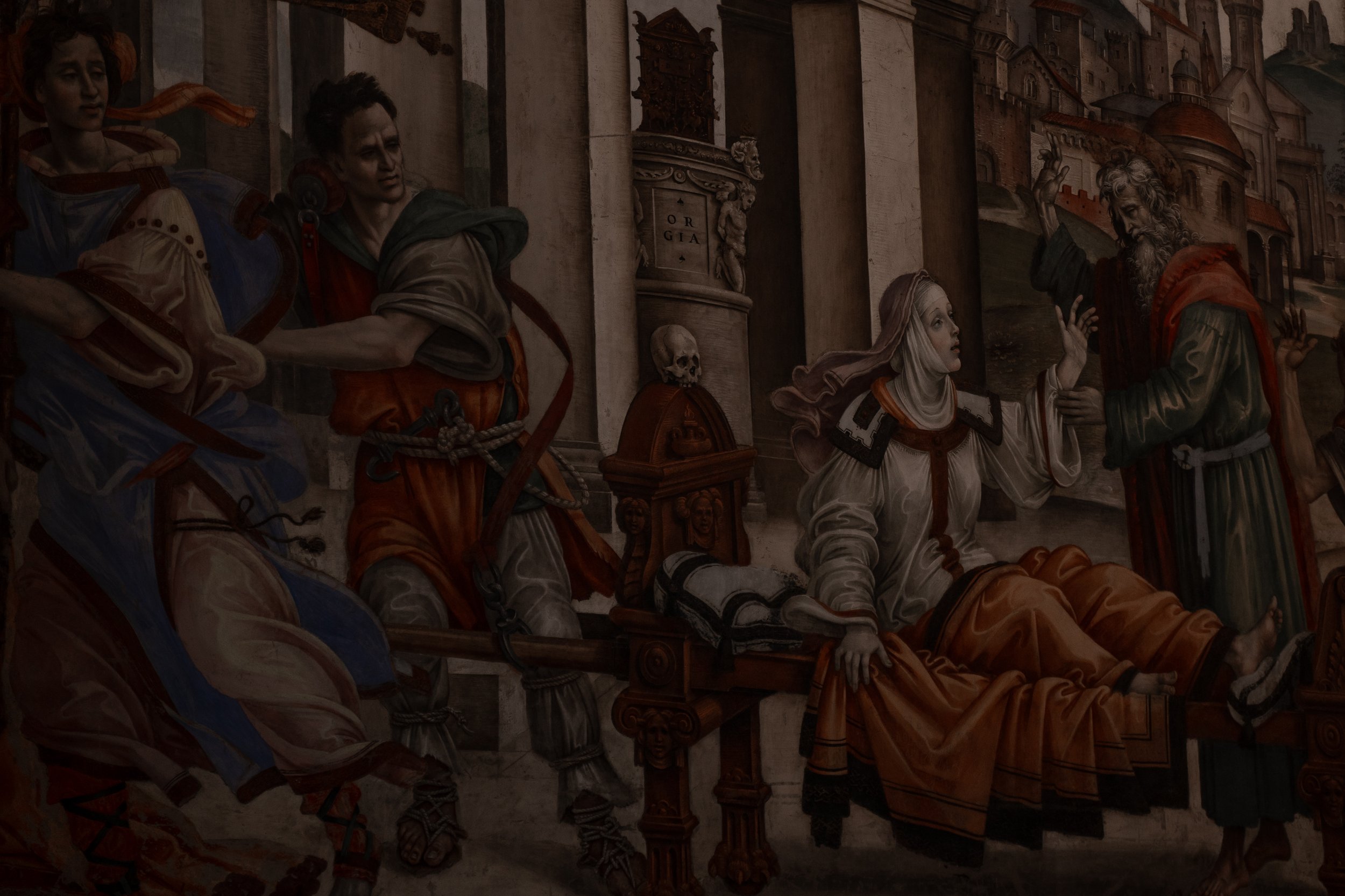
With its spectacular architecture and complex monastical design, the Basilica of Santa Maria Novella is known as one of the most important Gothic churches in Tuscany. The idea for the church was forged by two Dominican friars and construction began in the 13th century. The lower section of the iconic green and white marble façade is noted to have been designed by architect Fra Iacopo Talenti da Nipozzano in 1350 whilst the upper section was completed around 100 years later by Leon Battista Alberti, making it the oldest original church façade in Florence.
Make your way inside to explore the great masterpieces and stunning architecture which this historic church showcases. You will find extraordinary artworks by Ghirlandaio, Giotto and Masaccio as well as striking examples of Cistercian gothic compositions. Upon entering the church, the first chapel to the right of the altar called Cappella di Filippo Strozzi, immediately caught my eye. It depicts the lives of St John the Evangelist and St Philip the Apostle but if you look closely, you will see many skulls depicted within the painting. In fact, you can discover multiple examples of memento mori within the church’s design so keep your eyes peeled whilst wandering around as there are many intriguing artworks to appreciate. One of my favourite pieces was located to the far left of the altar, up a short flight of stairs to the western transept called Cappella Strozzi di Mantova. Here you will encounter a tombstone inserted into the wall featuring a scene slightly similar to the one I mentioned in the cloister of Santo Spirito (featuring a reaper with a scythe) but this time is it in the form of an illustration rather than a carving.
Once you have explored the interior navigate your way to the side door to uncover the mysterious cloisters which include Chiostro Verde (Green Cloister) and Chiostro dei Morti (Cloister of the Dead). The sublime and harmonious Green Cloister was given its name due to the earth-coloured clay, which was used to paint many of the frescoes which can be seen on its walls.
On the North side of the cloister, you will locate the outstanding Cappellone degli Spagnoli (Spanish Chapel) which during the 16th century was used as the friars’ Chapter House. Look down as you enter to admire the macabre tombstones sunken into the floor, featuring skulls with crowns and full-size skeletons. The walls still preserve the medieval frescoes by Andrea di Bonaiuto which narrate scenes of the Resurrection, Ascension and Pentecost as well as the Crucifixion and the Descent into Limbo. Upon the wall facing the entrance look to the right to discover a gaggle of demons and devils hiding in the corners of a cave!
From the Green Cloister a small passageway connects the chilling Cloister of the Dead, a sacred vaulted cemetery with 100’s of tombstones embedded in the walls and floors, which dates from the 13th – 14th centuries. The cloister is only modest in size but extremely atmospheric to walk around!
Finally, along the cloister wall as you exit you will be able to find a flying hourglass with a scythe through the centre and a skull and crossbones carving decorating two of the tombstones.
Travel tip: I couldn’t find an option to purchase a ticket online so if you are visiting (especially on a weekend) I would recommend getting in line at least 30 minutes before the church opens.
Address: P.za di Santa Maria Novella, 18, 50123
